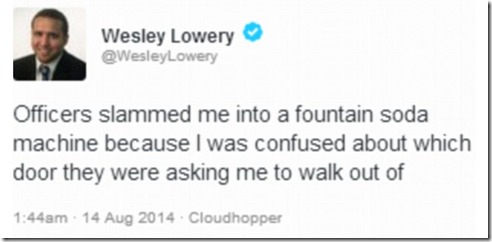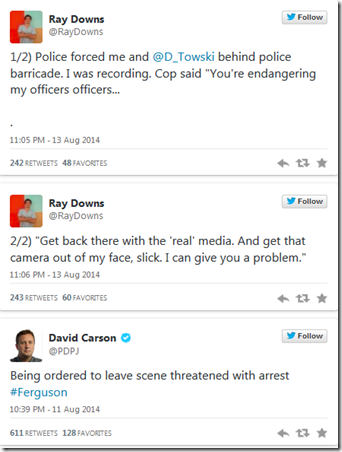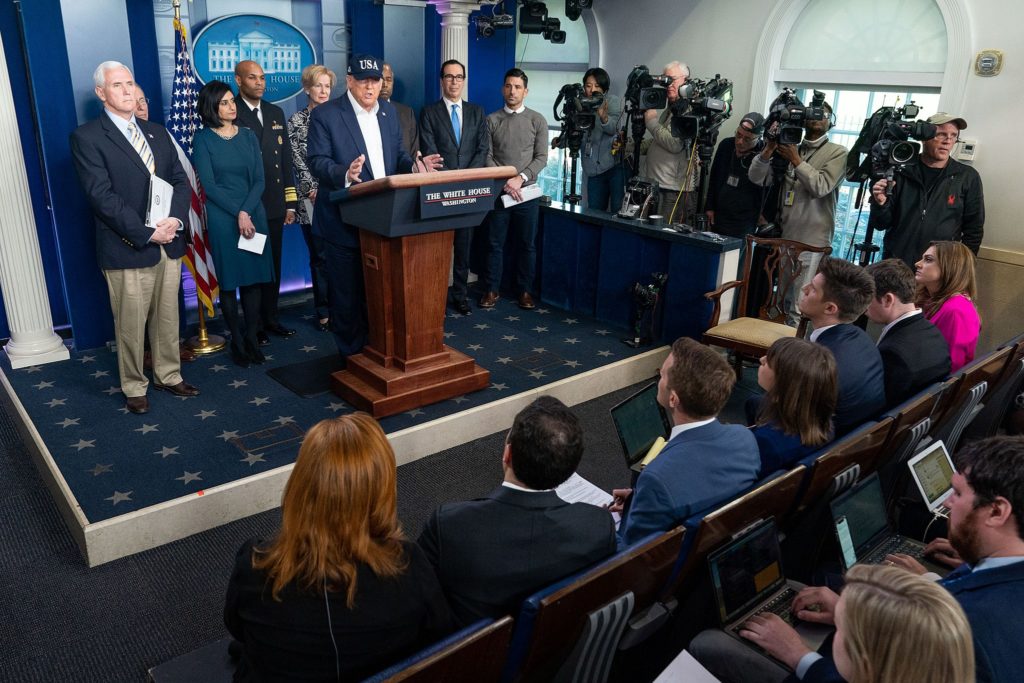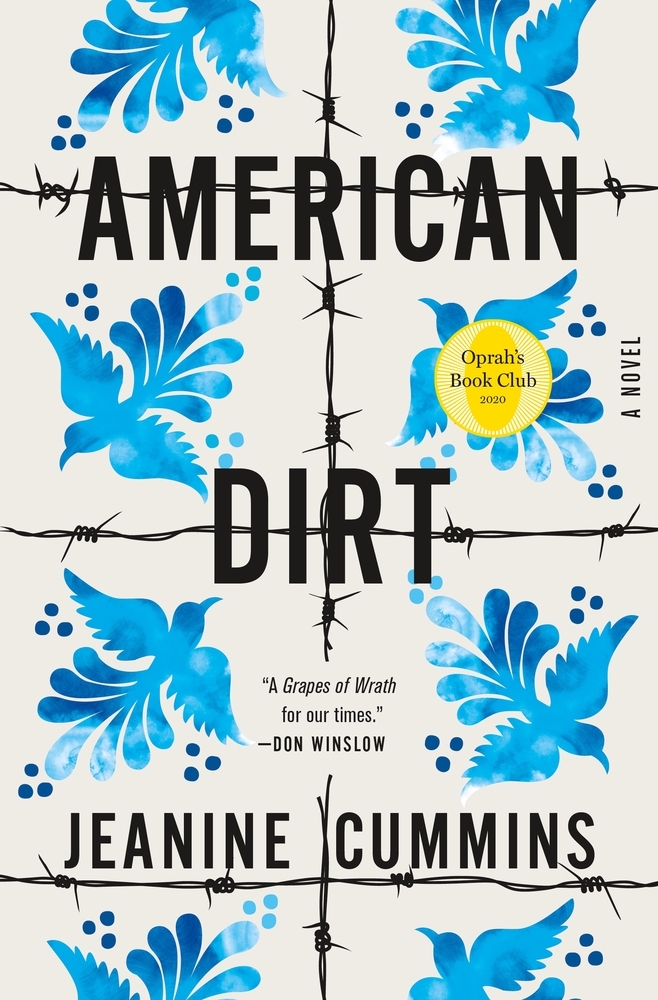August 2014: The Worst Video Media Disaster
Whatever your feelings about Michael Brown’s shooting and the resulting protests in Ferguson, Missouri, you should be concerned about a police department that threatens to murder peaceful bloggers, aims semi-automatic assault rifles at videographers, and arrests journalists without provocation.
The Ferguson police department’s bullying of reporters is not the biggest part of the Ferguson story. But as many people noted, if that’s how the department treats people who have a megaphone to the world, it’s unfathomable to think how they must treat local residents who don’t.
By employing often terrifying tactics, the Ferguson Police Department (and some officers from surrounding jurisdictions) reacted to the protests with some of the most shocking mistreatment of journalists I’ve witnessed in many years on American soil.
Among other incidents, police ordered two journalists from The Washington Post and The Huffington Post, who were working at a nearby McDonalds, to leave—and arrested them when they didn’t move quickly enough.
Wesley Lowery, the arrested Washington Post reporter, claimed that he was assaulted by officers:
Chris Hayes, who hosts a primetime program on MSNBC, was threatened with Mace by a police officer—while he was on the air.
The Huffington Post compiled several tweets from journalists in Ferguson, including these:
An officer pushed CNN’s Don Lemon while he was live on the air—and carrying a CNN microphone that made clear for whom he was reporting.
Then there was this report from the CNN wire:
“Police in Ferguson, Missouri, deliberately fired tear gas and rubber bullets at a television news crew Wednesday night, Al Jazeera America reported.
Photos and videos from the Al Jazeera America camera crew were widely shared in the wake of Wednesday’s incident, which Al Jazeera called an ‘egregious assault on freedom of the press that was clearly intended to have a chilling effect on our ability to cover this important story.’
The images showed a tear gas canister exploding close to the Al Jazeera correspondent Ash-har Quraishi, who tried to shield himself from the smoke.
Was it intentional? Quraishi’s crew members seem to think so.
‘We were clearly set up as press with a full live shot set-up,’” producer Marla Cichowski said in an e-mail. ‘“As soon as (the) first bullet hit the car, we screamed out loud, ‘We are press,’ ‘This is the media.’”
And perhaps most shockingly, there was this video of a police officer from nearby St. Ann who refused to identify himself, aimed a semi-automatic assault rifle at peaceful videographers, and threatened to kill them.
To be clear, this isn’t a post about every police officer in Ferguson; nor is it a larger critique of police officers, who play a critical role in protecting life and property. This is also not a post that presumes that this shooting was unjustified; the police officer is entitled to due process. But if one believes in the importance of law and order, as I do, one must also be concerned when a law enforcement agency seemingly does everything in its power to prevent reporters, through threat of force, from exercising their Constitutional right to cover a story.
The Ferguson PD took a difficult PR challenge (the shooting of Michael Brown) and turned it into a disaster (the perception of a lawless department operating without rules). At the very least, one would have thought that officers would have had the sense not to deepen their department’s perception problem by making homicidal threats on live television.
I expect that crisis communications professionals and media trainers who work with law enforcement will be using Ferguson PD as an example of what not to do for many years.
What do you think? Please leave your thoughts in the comments section below.





[…] Another look at how law enforcement dealt with the news media in Ferguson from Brad Phillips at mrme… […]
As someone who grew up miles from Ferguson and with almost three decades of public relations experience in the St. Louis market, I can tell you there were dozens of factors that created a perfect storm when it came to crisis media relations in this circumstance. Among them:
-A new chief of the St. Louis County Police Department who failed to see and understand the media storm on the horizon. (He replaced an outstanding chief who left because of corruption by the County Executive.)
-The County Executive of St. Louis, an African-American who failed in trying to calm the protestors, looters and rioters on the night after the shooting, lost his Democratic primary just days before the shooting
-A St. Louis County prosecutor who campaigned against the incumbent Executive because of corruption–approximately three FBI investigations
-A governor who might have violated state law putting the highway patrol in charge and usurping authority of local government and law enforcement. (The governor then ordered St. Louis County Police to not take actions to stop rioters and businesses were broken into and looted early on Saturday, Aug. 16.)
-And on and on and on I could go…
BOTTOM LINE: No one provided any leadership and spoke with ONE VOICE to the media from law enforcement, the City of Ferguson, St. Louis County, and the state of Missouri. (For a great example of how not to hold a media briefing, watch Gov. Jay Nixon attempt to hold a town hall meeting and answer media questions on Saturday, Aug. 16. It was a disaster.)
I listened to the scanners and watched livestream video for several nights. This area was close to a war zone–shots were being fired at police and others, Molotov cocktails were thrown, bottles of urine hurled, buildings set on fire, looting. Yes, media has the Constitutional right to cover the story, but law enforcement was responsible for their safety and their own safety. No one from law enforcement addressed that with media. (However, most local reporters didn’t have any problems with access–only the national media.) Reporters were starting to talk about forming pool reporters because of the unsafe conditions. Law enforcement eventually kept media in specified areas where they could safely report on the proceedings.
I’ve worked with law enforcement on large civic events and other matters. They’ve been professional and courteous. The events and circumstances were overwhelming, but this event will be a case study for years to come.
Sadly, things may get worse before they get better.
Please keep up your great work. You’re an inspiration to me and many other professionals in crisis communications and public relations.
I wanted to take a moment to clarify a couple of points. There is a fair amount of reference to Ferguson police specifically and it should be noted that the police management of the protesters, rioting, etc., fell into the hands of the St. Louis County Police and then later to the State Highway patrol. For the most part, Ferguson police department was out the incident management loop with the exception of situations arising back outside of their police department.
Many of the media arrests, out of control police with the protesters, etc. were performed officers working detail at the protests from other departments from around the St. Louis county area as well as other counties. For instance, the video where an officer pointed a gun at a protester and threatened to kill him, was in fact a St. Ann police officer, not a Ferguson police officer. That officer was recently fired from his department.
As a former PIO myself, the media relations was for the most part a shambles. We tried for five days to find out who was the information officer at the command post. We were told at first the Missouri State Highway patrol. So, we then were given phone numbers to two officers with the highway patrol that handled media relations, but their voice mail boxes were full and remained that way for days. We then sent a text message to one of the officers asking for direction, but no response even after we could tell he read his iPhone message. We eventually gave up on them. Then we were told St. Louis County police was handling the media and we needed to call their headquarters, but the media relations voice mail box was also full. Checking back constantly for days, the VM box remained full. We then drove to the command post entrance checkpoint and made our inquiry to a guard. Could he ask someone for this information on our behalf? After some back and forth walkie talkie traffic with someone at the command post, we were again told to call media relations at St. Louis County police headquarters and again we were met with a full voice mail box.
We searched the web to see if an information site was put up specifically for the incident and we found none. I walked around the media staging area adjacent to the command staging and asked reporters if they had a contact and they did not. They said just wait and someone comes out to do a briefing. Finally, a FOX crew had an email address for media relations at St. Louis County police. A day later my email was returned and we were put in touch with another officer from St. Louis County police and he was able to respond to our request to film a story about the command center itself, especially since it had some unique functions setup within the staging area that was rare to see on a police run incident. Our request was denied and from what I understood, not from St. Louis County police, but from media relations all the way at the governor’s office. Apparently they were the ones really running the media show. We weren’t there filming as part of the mainstream media, we were a video crew for PoliceOne.com. And we didn’t care about riot footage, there was plenty of that already on all the news channels. We wanted to give an inside look behind the scenes to share with our 500,000 plus PoliceOne subscribers. Oh well, another time and another incident perhaps?